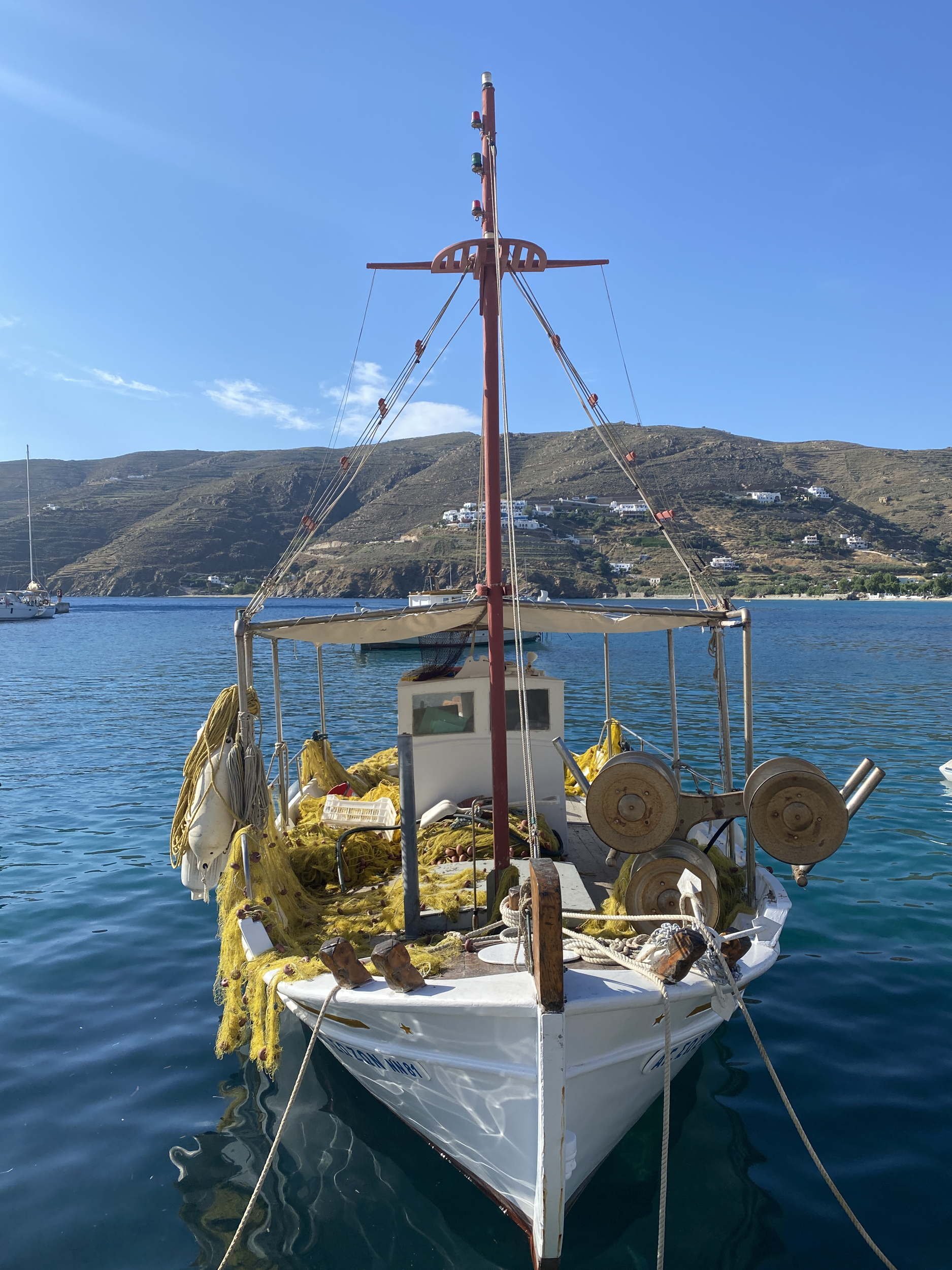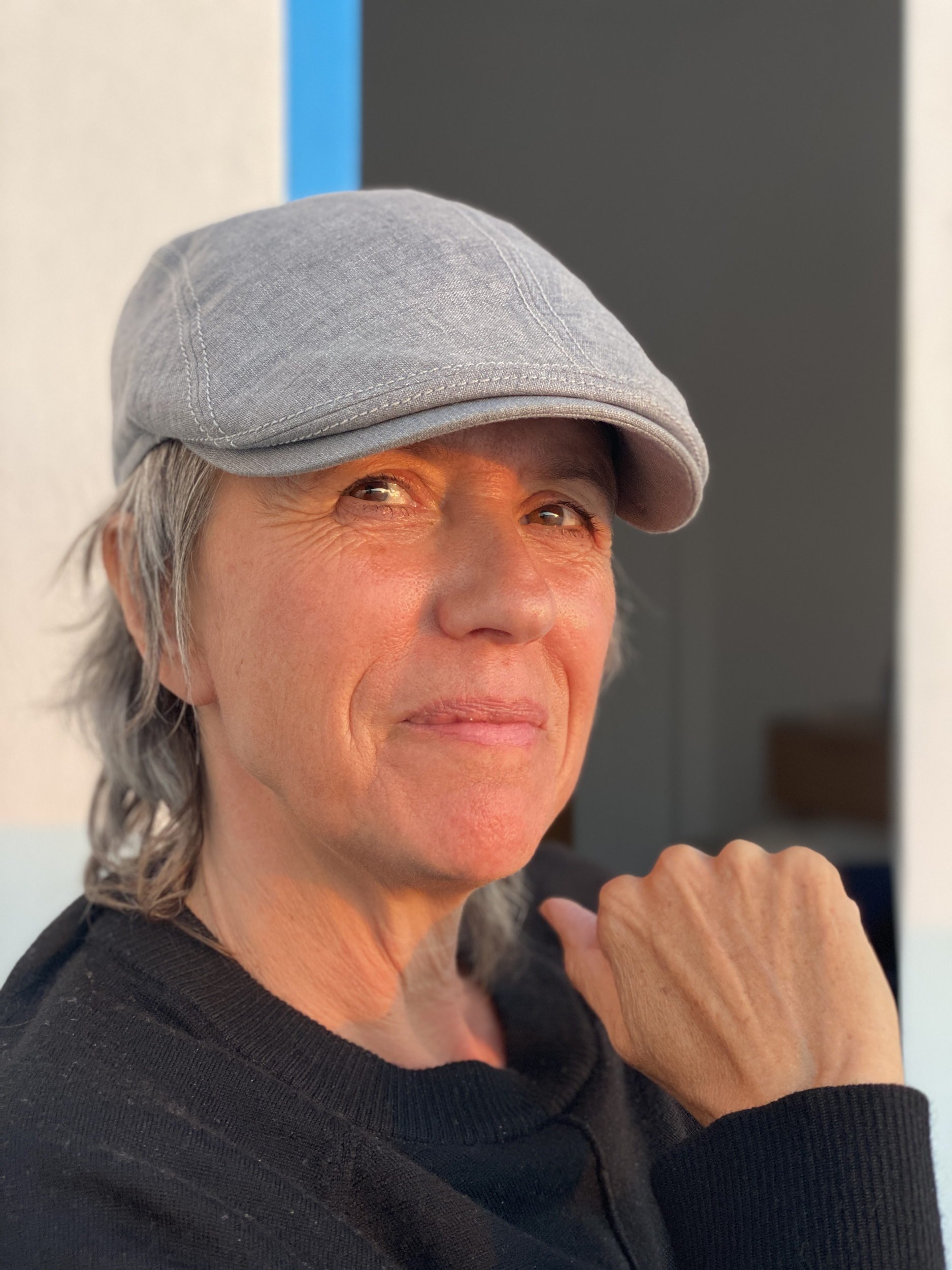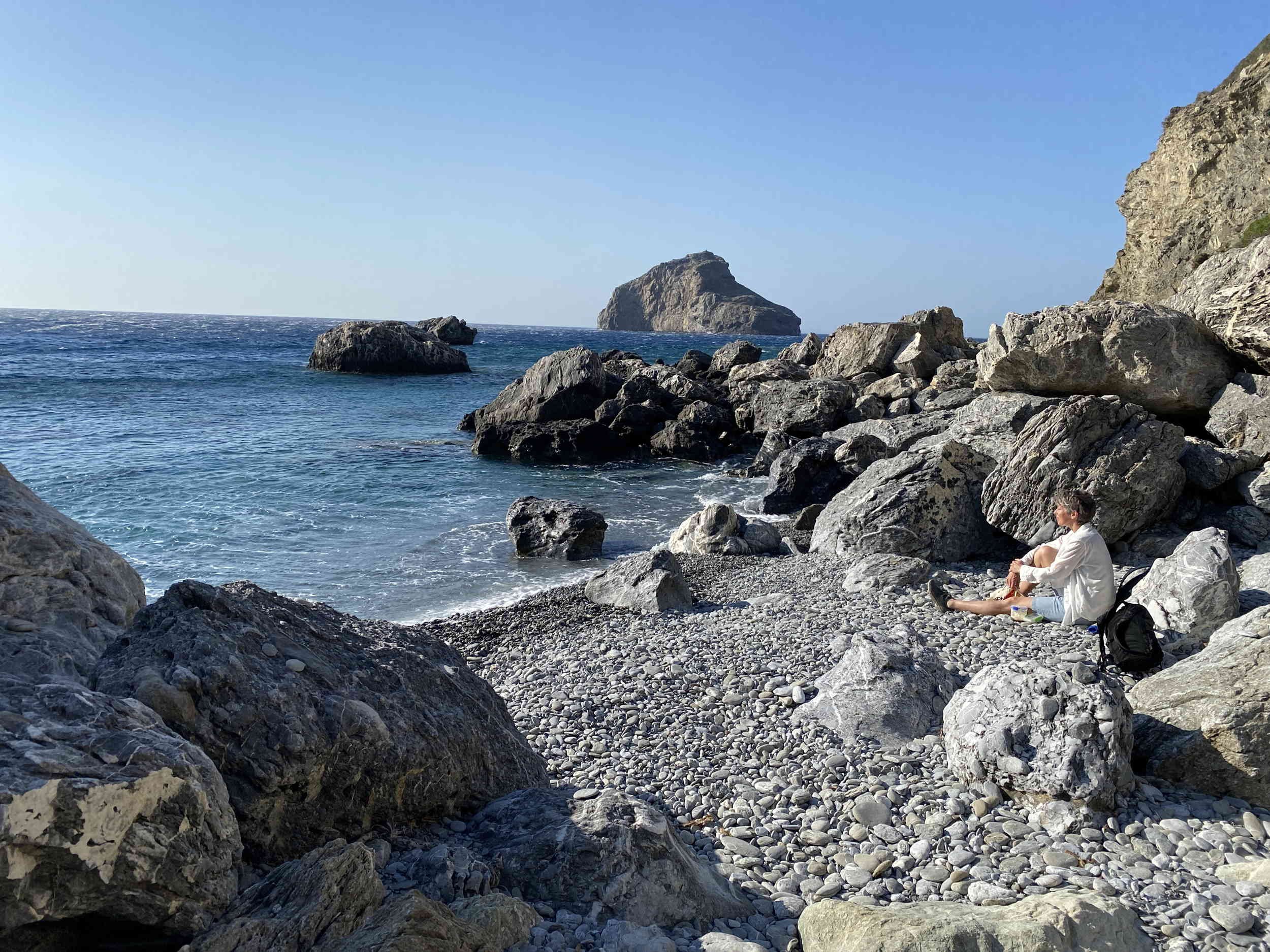Secrets to a long life
“Let us cherish and love old age; for it is full of pleasure if one knows how to use it. Fruits are most welcome when almost over; youth is most charming at its close; the last drink delights the toper, the glass which souses him and puts the finishing touch on his drunkenness. Each pleasure reserves to the end the greatest delights which it contains. Life is most delightful when it is on the downward slope, but has not yet reached the abrupt decline.”
It’s a 30-minute walk to the beach. First around the bay, then a slow climb to the cemetery, down steps to a strip of pebbly beach, a clamber up over rocks past the blue roofed chapel, along the shore again before the final rough hike over high rocks where the sandy beach comes into view.
On the way, we stop to greet the dead at the cemetery, noting how long each person had lived: 92, 96, 89, 104, 91.
We are on a tiny Greek island called Amorgos, and the locals have warned us there’s no hospital here, simply a first aid station. ‘
‘Wow, fancy living such long lives with no hospital’, I say
Then, ‘On second thoughts, is that why they lived so long?’
Amorgos is not a destination for anyone with a physical disability. Walking meant walking uphill, up steps, up over rocks or back down again. Apart from the road around the bay, there was no level ground. I have an old meniscus tear on one knee and a touch of arthritis in the other. Would they get worse as the days went by? The opposite was true; my knees needed that full workout.
I’m back from holiday now. My tan is fading and I’m seeking rough ground here in Stockholm for my walks.
I think back to those gravestones and wonder how the people lying there had lived so long despite harsh conditions? Or was it because of them?
Here’s what I think their secrets to a long life might be:
Working hard physically with little stress
A favourite spot is a taverna that doubles as a travel agent. It’s the oldest taverna in the port. The couple running it are in their 60s; they move slowly; they have time to talk. The limited menu includes stuffed cabbage and stewed goat. In between customers, they sit side by side, watching life in the port. The couple are in their taverna from early to late, 7 days a week. It’s hard work, yes, but it’s not a job, it’s their life.
Eating real food
Walking in the hills, we hear their bells before we see the goats, they are everywhere. So when it’s time for lunch, the local cheese is goat’s cheese. The girl in the village taverna, explains that the lamb chops are from her dad’s sheep and her brother grew the tomatoes. In the little shop, we buy eggs splattered with chicken shit. There are no desserts on the menu, just a complimentary glass of raki. Each taverna prides itself on its own unique recipe, a combination of liquor, herbs and local honey.
Being in a community
We are in the port town of Katapola which has the largest population here, that is 600 people. Maybe pause for a moment and look up the population of your town. Mine, a little seaside town called Gorleston in the UK, has 24,000. Less than 2000 people live on the entire island of Amorgos. The kids playing on the street seem to belong to everyone. We find the tiny chapel by the sea, it’s locked, but the key is under a stone by the door. There’s an intimacy here.
Living offline
Back home in Stockholm, we’ll probably watch an episode of Borgen after dinner. On Amorgos we’d just sit at the taverna watching the world go by, the sun goes down and the sky grows dark. Outside from dawn till late, other than a long siesta. No screens, no phones, just one another. We seemed to be engaged in one long conversation that we would pick up and put down again. Connecting more and more deeply as the days went by. And, at night, every night, I dreamed of my long-dead ancestors.Living in a sensory world
My feet enjoyed a holiday from shoes and relished the soft sand, the warm concrete, and even the pebbles on the beach. We’d head out from our cool shady room into the morning sun. When the heat became fierce, we’d get into the cold, cold sea. So many changing sensations. Crunchy apple, icy beer, garlicky tzatziki, all intense explosions. Being outside was to be in a living, changing world, not the static, thermostatically controlled room I’m used to. Consequently, I felt more alive to everything. Even if I don’t live to be 104, I’d like to spend more of my life feeling this alive!
What do you think the secret to a long life is?
“Despite our good fortune to live in a time when we aren’t at great risk of communicable diseases, we are, in fact, dying - slowly, in bits - from our natural tendency to do as little as possible. Our unquenchable desire to be comfortable has debilitated us… Perhaps the only way out of our poor physical state, created by our culture of convenience, is a return to the behaviours of our ancestors. ”




